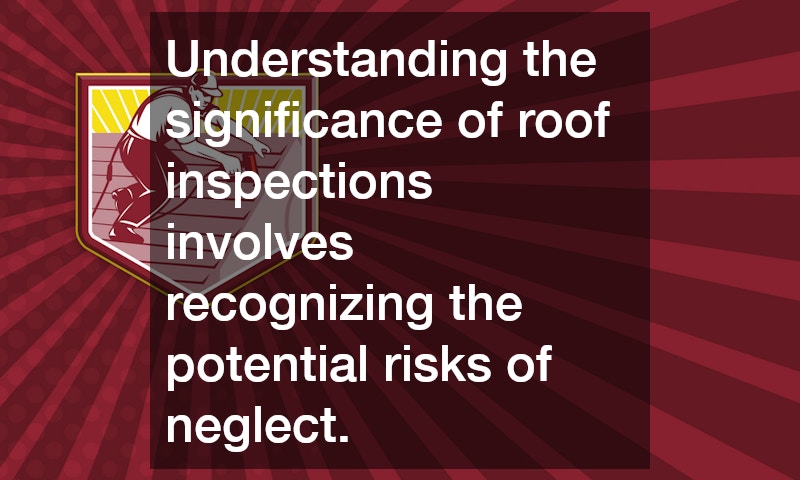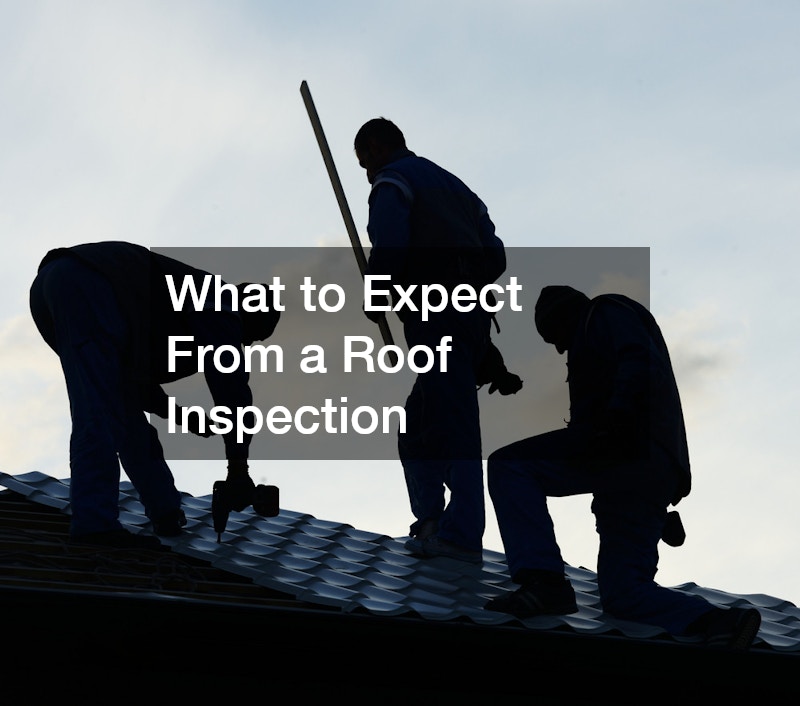Roof inspections are crucial to maintaining the integrity and longevity of your home. A professional roof inspection can identify potential problems before they escalate into costly repairs. When it comes to protecting your home from the elements, your roof is the first line of defense.
Ensuring it is in optimal condition can save you from future headaches and financial strain. Homeowners often overlook the importance of regular roof maintenance until visible damage occurs.
Understanding the significance of roof inspections involves recognizing the potential risks of neglect. Weather elements like strong winds, heavy rain, and hail can cause significant damage over time. Roof inspections help to identify loose or missing shingles, leaks, and wear and tear that are not easily visible. This proactive approach enables you to address minor issues before they become major, costly problems. Furthermore, keeping your roof in good condition can improve energy efficiency, reducing heating and cooling costs.
A periodic roof inspection conducted by a seasoned professional should be part of your home maintenance routine. The recommended frequency for inspections is typically once or twice a year, or following major storms. During a roof inspection, experts examine several components of your roof, including the structure, materials, and workmanship. This thorough examination ensures that every aspect of your roof’s condition is assessed, providing peace of mind. Additionally, a well-maintained roof enhances your home’s curb appeal, potentially increasing its resale value.
What Happens During a Roof Inspection?
A roof inspection involves a detailed examination of your roof’s condition by a qualified professional. The process typically begins with a visual assessment from the ground, where the inspector looks for obvious signs of damage or wear. This initial step helps in identifying areas that require closer examination later in the process. Once the visual survey is completed, the inspector will move onto the roof for a more detailed inspection. The entirety of this process is designed to ensure that no potential issue is overlooked.
During the inspection, the inspector checks the shingles for signs of wear, such as curling, cracking, or missing pieces. They will also inspect the roof’s flashing, which is critical for preventing water from penetrating the building. Flashing is often found around chimneys, skylights, and vents, areas that are particularly susceptible to leaks if not properly maintained. Additionally, the inspector will evaluate the overall structural integrity of the roof, looking for any signs of sagging or other structural issues. This step is crucial in identifying potential problem areas that could lead to significant damage if left unaddressed.
The inspection concludes with an evaluation of gutters and downspouts to ensure they are functioning properly to divert water away from the home. Blocked or damaged gutters can lead to water accumulation and subsequent damage. Debris, such as leaves and twigs, can clog the drainage system, so ensuring they are clean and in working condition is part of the inspection. The inspector will also assess your attic ventilation to make sure it is adequate, which is vital for maintaining energy efficiency and preventing moisture buildup. Once the inspection is complete, you will typically receive a detailed report outlining any findings and suggested repairs.
Preparing for a Roof Inspection
Preparing for a roof inspection involves several steps to ensure it goes smoothly and effectively. Begin by scheduling the inspection at a time when weather conditions are conducive; dry conditions are ideal for a thorough examination. Make sure to provide the inspector with access to your roof and attic if necessary. Clearing the area around your home of obstacles can also facilitate a more efficient inspection process. Being organized not only respects the inspector’s time but also ensures they can perform their job to the highest standard.
Before the inspection, take a moment to examine your ceilings and attic for any visible signs of leaks or water damage. Document such areas if you find them, and inform the inspector upon their arrival. This information can help the inspector focus their assessment and identify potential causes for any issues you’ve observed. Moreover, ensure that your roof is free from debris, such as leaves or branches, which can impede the inspection process. Keeping your roof clean not only aids the inspection but also helps maintain the roof’s longevity.
It is beneficial to prepare a list of questions or concerns to discuss with your inspector before they begin. Inquiring about the state of your roof, estimated lifespan, and recommended preventative measures can provide valuable insights. Having a basic understanding of what the inspection entails can also help you engage more effectively with the inspector. Once the inspection is completed, ask for a comprehensive report and discuss any necessary repairs or maintenance steps. Being actively involved in the inspection process ensures you are better informed and empowered to make decisions regarding your roof’s care.
Interpreting the Inspection Report
After a roof inspection, the inspection report serves as a detailed analysis of the roof’s current condition. Understanding the findings can be somewhat daunting, but it’s essential to ensure your home remains protected. The report typically categorizes issues based on urgency, from immediate repairs to areas that need monitoring. Reading through this report carefully can help prioritize necessary actions to maintain your roof’s integrity. A well-maintained roof not only safeguards your home but also increases its potential resale value.
Key elements of the report generally include detailed observations of materials, workmanship, and structural conditions. It may outline issues such as damaged shingles, improper flashing, or inadequate attic ventilation. Beyond identifying problems, the report often includes recommendations for repairs or maintenance to rectify these issues. Understanding these recommendations helps you take timely action, avoiding potential complications that could arise from neglect. Relying solely on visual inspection may miss underlying issues that a comprehensive report can uncover.
After reviewing the report, consult with your roofer about the most pressing issues and the most efficient ways to address them. Clarify any terms or conditions in the report that may be unclear to you. Prioritizing repairs based on the inspector’s findings ensures that critical issues are resolved first, reducing the risk of further damage. Furthermore, consider setting a timeline for when the suggested works should be completed, keeping in mind any external factors such as seasonal weather conditions. Following through on the report’s recommendations is a proactive step in maintaining your roof’s health and, by extension, your home’s overall condition.
The Benefits of Regular Roof Inspections
Regular roof inspections provide a wealth of benefits that extend beyond immediate repairs and maintenance. For starters, they contribute significantly to the lifespan of your roof, which can save you money in the long term. Identifying and addressing minor issues promptly prevents them from evolving into major problems. This preventative approach not only ensures your home’s safety but also helps maintain the aesthetic appeal of your property. A well-cared-for roof is an investment that enhances overall home value.
Beyond safeguarding your home’s value, routine inspections improve energy efficiency by ensuring that your roof is functioning optimally. Gaps or weaknesses in the roof’s structure can lead to energy loss, driving up heating and cooling costs. A secure and efficiently functioning roof can mitigate these energy losses, reducing your environmental footprint and utility bills. Moreover, proper attic ventilation, often checked during inspections, plays an essential role in regulating temperature and moisture. Attention to these details contributes to a comfortable living environment year-round.
Overall, regular inspections foster peace of mind, knowing that your home’s first line of defense against the elements is in top condition. The proactive nature of regular inspections allows you to manage your home maintenance systematically. Coupled with a detailed inspection report, you gain a clear understanding of your roof’s condition, enabling informed decision-making. Engaging with a reputable roofing professional ensures that all aspects of your roof’s health are thoroughly examined. The combination of early detection and professional assessment makes regular roof inspections an invaluable component of home maintenance.




